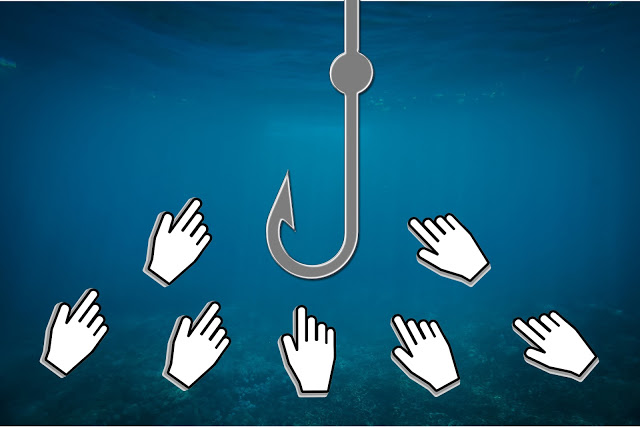UPDATED AUGUST 19, 2025
Content marketing works
I’ve been a content writer for more than 16 years.
Man, that makes me feel old!
I digress.
I’ve spent those 16 years learning, developing and perfecting my craft. Creating high-performing content that attracts the right visitors to your website and gets them engaging with your brand. So, when the time is right for them and the stars align, they should become paying customers.
I know content marketing works, because I’ve seen it for myself and I’ve seen it happen for my clients.
If content marketing hasn’t worked for you, it may be because you’re making one of these 20 common content marketing mistakes.
20 common content marketing mistakes
1. Your content is boring

This is the number one content marketing no-no. Your content should never be boring.
When you’re creating online content, you don’t have a captive audience. People are free to leave any time. And they’re not going to bother with content that doesn’t excite, interest or connect with them.
But what counts as boring content?
Well, for example, it could be:
Dry content
Reading your content is like trying to eat a whole packet of dry cream crackers. It has no personality, no enthusiasm for the subject and makes no attempt to be human or relatable.
Monotonous content
Reading your content is like being trapped in an elevator with the most boring person in the world. It has a flat, passionless tone with one over-long sentence after another, lumped together in paragraphs that never seem to end.
Rambling content
Reading your content is like riding with a driver who takes a 50-mile detour to avoid driving two miles on the motorway. It’s full of unnecessary detail and takes forever to get to the point.
Corporate content
Reading your content is like listening to a robot reading from a script approved by a committee. It sounds stuffy, soulless and so polished, it’s become sterile. Like it wasn’t even written for humans.
Here’s how I make boring subjects interesting for your readers >>
2. Your content doesn’t fit your brand
Your brand has fashion house aspirations, but your content has more sale-rail-in-Primark vibes.
You run caravan parks in British seaside towns, but your content sounds like it’s written for a five-star resort in the Cote d’Azur, dah-ling.
A disconnect between your brand and your content will confuse and alienate your audience. It will make them feel your brand is not for them and send them to your competitors.
3. Your content is sloppy
You don’t take the necessary time or care over your content and it’s riddled with errors and oversights. These often go beyond spelling mistakes, grammatical errors and typos.
Some of the corkers I’ve seen recently include:
- Editing notes left in
- Whole sections repeated
- Design bloopers
- Mispronunciations
- Video captioning errors…
… do I need to go on?
You don’t want your main engagement to be from people pointing out your mistakes. So make the effort to double and triple-check your work.
4. Your content doesn’t have value
Consuming your content is a choice. Your audience doesn’t have to do it. And if your content has no value for them, they won’t.
Your content should help, inspire, educate or entertain them. In addition, your SEO-optimised content should be something your visitors are actively looking up. Because this is what will bring them to your website.
A title like: Should I buy a Mac or a PC? is valuable and something people are actively searching for. They’ll be looking for an objective comparison and a breakdown of the pros and cons to help them make a decision.
But a title like: Our company training day in the Peak District is going to be of little or no interest to them. And they’re not going to be actively searching for content like that.
5. Your content is stolen
In the olden days of the internet, people without the skills, imagination or inclination to create their own content would just copy it from someone else. Until Google got wise to that and started down-ranking duplicate content.
Now we have self-appointed “influencers” advocating that you steal other people’s content and repurpose it with the help of AI. They’re even giving tutorials on how to do it. FFS.
But this is a bad idea.

It’s peak laziness
Good content takes research, creativity, effort and patience. Stealing someone else’s shows you couldn’t be bothered with any of that.
It’s unethical
Taking someone else’s hard work and using it for your own benefit is a form of plagiarism. It’s stealing.
It’s unoriginal
If it’s not your idea, it’s not your take and it’s not your brand. The content you’ve stolen won’t tell your audience anything about you, the way you work or your capabilities.
It’s not a good look
If you’re posting raw, unmodified AI content, it will sound like AI content. And seeing as 79% of readers view brands that post AI-generated content less favourably, that won’t do you any favours.
6. Your on-screen content is difficult to read
Reading on a screen is different to reading a book. People naturally skim on-screen content and you need to make allowances for that. If you don’t, you may find your audience won’t bother to read it.
Common mistakes include:
- Writing solid, impenetrable walls of text with few line breaks or headings
- Using low-contrast or busy backgrounds that don’t make the text stand out
- Having lines of text that span the entire screen
- Centre-aligning, right-aligning or justifying your text
- Using a typeface that’s too small or too fancy.
7. Your content doesn’t deliver

Your content should deliver what it promises. Otherwise, you’ll leave your audience disappointed and sorry they bothered to give you their time.
This will happen if you:
- Draw your audience in with a sensationalised clickbait headline that’s deliberately misleading
- String them along with a long article or video that doesn’t give them what you promised
- Shortchange them with fewer tips than you advertised
- Don’t give sufficient information or detail.
8. Your content doesn’t suit your audience
The market for your sofas is retired couples, but your brand photography looks like a boudoir shoot.
Your product is marketed to young women, but your content sounds like it’s written for old men
Your recipes need the kind of ‘store-cupboard essentials’ your low-income audience just don’t have.
Your content needs to be right for your target demographic. If it isn’t, it won’t make the right connection.
9. Your content is opinions presented as facts
Facts matter. Your opinions, not so much.
You want to create the kind of valuable content that will be useful to your audience. If you’re making claims, that means you need to do your research and back up those claims with evidence.
If you don’t bother to do that, your content will just be your opinions and they’ll be easily disregarded.
10. Your content isn’t searchable

First, not all your content needs to be visible on the search engines. Some content might be just for the visitors who’ve already made it to your website.
BUT…
If you’re creating content with the intention of bringing new visitors to your website, that content needs to be keyword-optimised. Otherwise the search engines won’t be able to find it and put it in the search results where your audience can see it.
11. Your content is purely for SEO
The opposite problem to content that isn’t searchable is content that’s created purely for SEO. This kind of content is packed with all the right keywords, but the value for your human audience is negligible.
It might be bringing in the traffic, but you need to remember, traffic = people. And if you’re not thinking about what those people will be doing when they reach your website, you’re really missing the point.
Content that ranks well is just vanity metrics if it doesn’t help your prospects or your business.
12. Your content is just advertising
Content is not advertising. If anything, it emerged as an antidote to advertising, because people were getting sick of being confronted by advertising everywhere they went.
Content should give value and be worth your audience’s time.
You can produce all kinds of content — including a small amount of sales content. But the primary role of content is not to advertise or sell — it’s to help your audience buy.
13. Your content has no strategy or goal
You’re busy creating content, but it’s aimless. Like you’re running in a hamster wheel and going nowhere.

As much as your content shouldn’t be openly selling, it should have a clear goal that you want to achieve for your business. In short, there should be a ‘What’s In It For Me?’ for your customers and for you.
But it will only work for you if there’s a strategy behind it and some goals you’re working towards.
You should aim to finish each post with a suitable link that gives your readers somewhere else to go. That might be links to more articles on the same theme, a link to download a lead magnet, a link to view your range or portfolio or a link to contact you.
14. Your content is just for the sake of it
You made a commitment to yourself/your business mentor/your SEO to blog regularly. And you’re not going to break that for anyone. So you keep posting. Even when you’re busy, when you’re tired, and when you don’t have anything meaningful to say. Even if it means creating content you know is average and not up to standard.
Posting content for the sake of posting is a bad strategy, because when it’s average, it will only disappoint the audience you’ve worked hard to engage. And it could make them reluctant to consume your content in future.
15. You’re not publishing content regularly enough
Research conducted by Hubspot revealed that its customers with with blogs gathered 68% more leads than customers without.
Having a blog is important, but consistently adding new content and auditing old content is equally important. New content will keep your site fresh and current. And the more regularly you post content, the more regularly Google will come back to crawl your site and index that content.
To post meaningful content regularly, you need a content strategy and a content plan. The strategy will ensure that your content has a purpose and the plan will mean you always have something meaningful to post about.
16. Your content isn’t comprehensive
If your content skims over the topic rather than going into detail, it may not give your audience everything they need. And that means they’ll have to go elsewhere to find the information and answers you haven’t provided.
The best way to avoid this and keep them on your site, is to make sure your content is as all-inclusive as you can make it.
17. You haven’t vetted your sources
Dave, from ‘Dave’s Blog’, says that 95% of people are unhappy with their mobile provider. He doesn’t have any sources for his information, but you decide to quote it anyway — because if Dave said it, it must be true, right?
The truth is, there’s a lot of misinformation on the internet. And if you’re repeating everything you read without any scrutiny, you’re just adding to that problem.
Vetting your sources means getting to the root of the story to find who published the original research and making sure the information is still current enough to use before you cite it as your source.
18. Your content assumes too much
Your content should understand your audience and their needs. And it should help them get from A to B — with A being where they are now and B being more educated, informed and inspired. But for this to happen, you need to understand your audience well.
If you assume too much about them, your content could be confusing, irrelevant or miss the mark completely.
For example, you might be assuming:
- How much they already know
- What they’re interested in
- Why they’re looking for your content and what they want to gain from it.
19. Your content strays from your expertise
Your business and area of expertise is A, but you also have strong opinions about X, Y and Z. So you discuss them openly and freely, even though they have nothing to do with your business, your knowledge or your expertise.
Problem is that this irrelevant content deviates from your key messaging. It will confuse your audience and Google, which isn’t what you want when you need readers, domain authority and a ranking in Google’s search results.
20. Your content isn’t promoted
Creating your content and hitting ‘publish’ is just the beginning. You then need to promote it far and wide to get in front of as many people as you can.
But you create your content, hit publish and then forget about it — so a big portion of your engaged audience never even gets to see it.
Do you need help with brand-friendly content marketing?
I’m Jenny Lucas. A freelance content writer based in Leicester, UK.
If you need well-researched, high-impact blog content your audience will love — I can help you by developing a strategy, content planning and writing.
Visit my website to learn more about my content writing service.
Or get in touch and talk to me about your needs.

You might also like…



